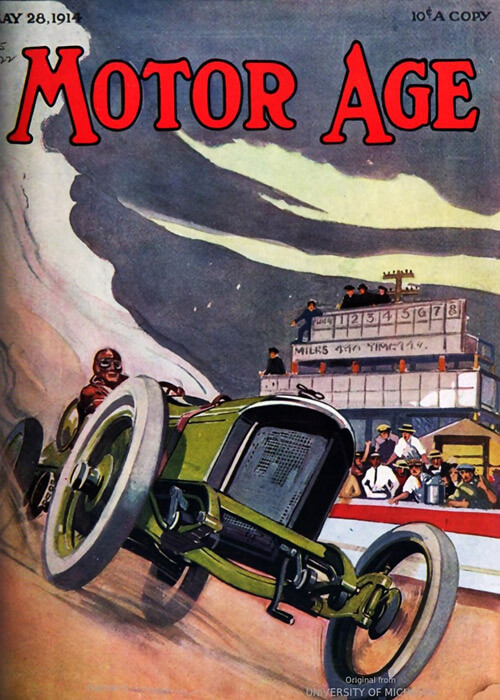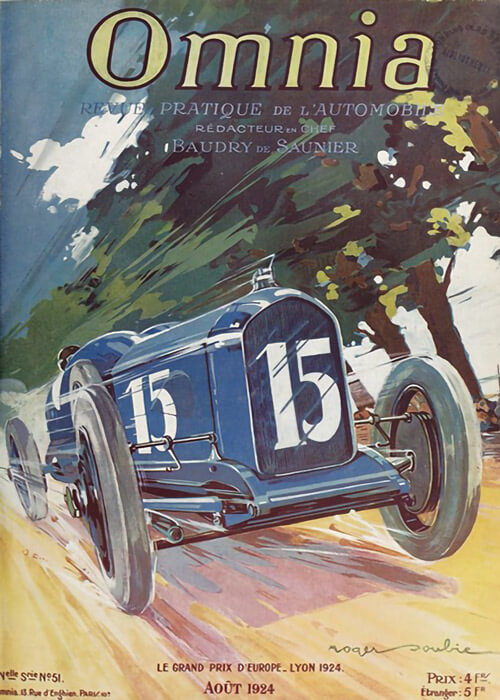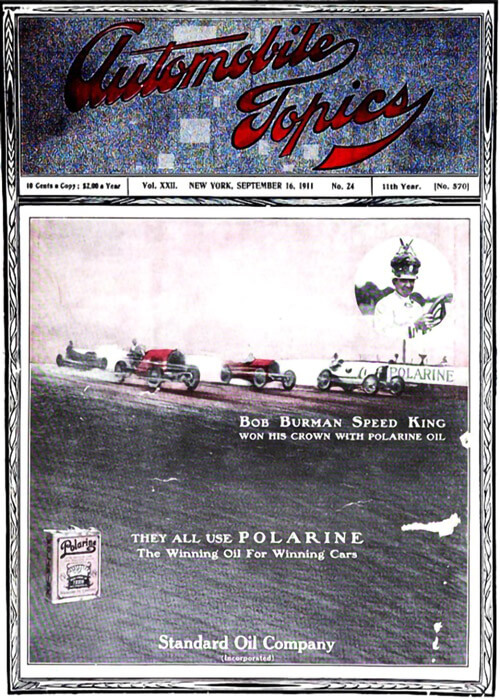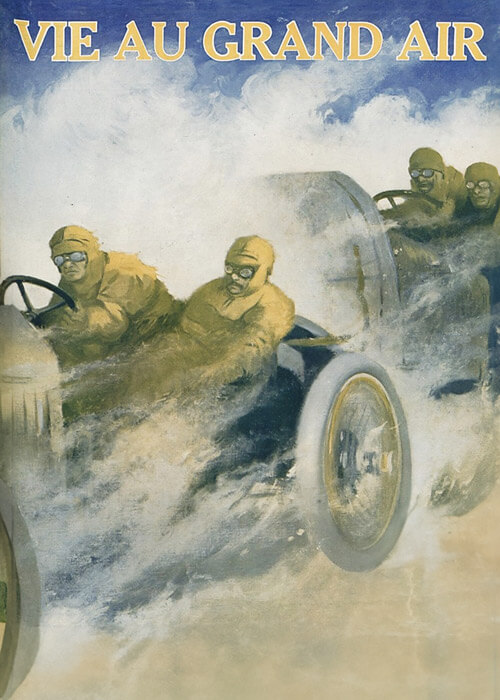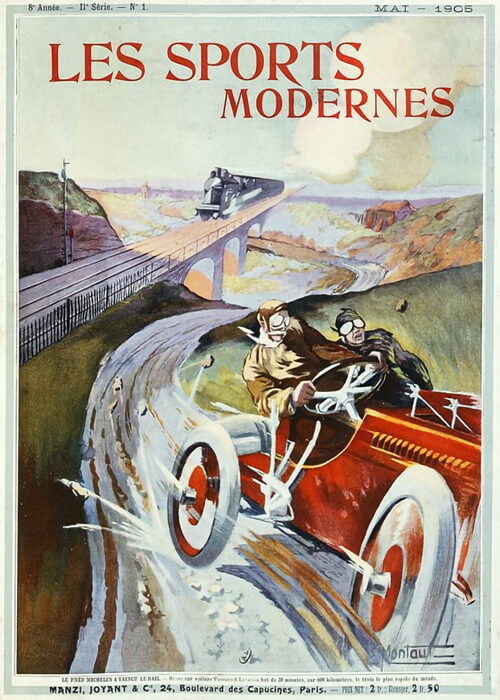The 1913 Indianapolis 500 – The French Lion roared.
European cars participated in the two preceding “500’s” already, but not as factory supported teams and driven by European drivers of some name and fame. Participation of European top teams was one of the things that Indianapolis could use to secure its status even more. And that’s what happened in 1913.
The French Peugeot company had a racing team made up by a group of talented drivers who also were decent engineers on combustion engine technology. The year before they had combined the elements of 4 valves per cylinder, two overhead camshafts and a hemispherical combustion chamber. From that day on, their technology was considered as the near-to ideal concept of valve operation.
Also attracted by the amounts of prize money, a „lure o‘ gold“, the team went to Indianapolis with two slightly modified versions of their cars. The Italian company Isotta Fraschini sent 3 cars.
Much was done to make the `furreners` feel welcome and at ease at the Speedway and this for them so unfamiliar kind of track. Former driver Johnny Aitken was asked to `join` the Peugeot team to find their way around on the Speedway.
It resulted in a race record set that was never ever bettered over the years to come. Jules Goux and his mechanic Emil Begin won the race, no less than 13 minutes and 8 seconds ahead of 2nd place finisher Spencer Wishart.
Indianapolis would retain the tradition of allowing the race to continue for some time after the winner had crossed the finish line. Because in the early years it was mandatory for finishers to complete the distance in order to receive the prize money corresponding with the finishing place! But this rule eventually changed. Anyway, within that period of time that drivers were permitted to continue racing till the finish flag was eventually waved, never again was a winner in time so far ahead of the number two as Goux had been in 1913. Converted into distance: when Goux crossed the finish line, Wishart was more than 6 laps behind! Not that Goux had been so blindingly fast by the way, he had been 14 minutes slower than Joe Dawson had been the year before.
A legendary story about Goux & Begin is that they both drank a bottle of champagne at each of their 6 pit stops! Many years later it was found that Goux had indeed taken some champagne but only in four of his stops and the bottles in question were not big magnums but tiny, small ones. It was typical French custom. YKW
Indianapolis 500 - 1913
The Horseless Age
- Preparing for the 500-Mile Races, part 1 - 21 May 1913
- Preparing for the 500-Mile Races, part 2 - 21 May 1913
MoToR
- What of Racing? - under construction
Motor Age
- Thirty-One in Hoosier Race - under construction
- Practice starts for Motor Sweepstakes - under construction
- Starters Ready for 500-Mile race - under construction
- The Foreigners - under construction
- Drivers in 1913 Sweepstakes- under construction
- How the Sweepstakes was Run and Won - under construction
- Some Superlatives of the Speed Game - under construction
The Motor World
The Motor Way
The Automobile
- Foreign Drivers Preparing for the 500-Mile Race - under construction
- Indianapolis, a City Pulling Together - under construction
- Twenty-Nine cars Ready for Big Race - under construction
Automobile Topics
- Indianapolis Race is Truly International - under construction
- France Wins America's Leading Racing Event - under construction
The Automobile Journal
- American Racing Results for 1913 - under construction
La Pratique Automobile
- Une Victoire Francais - under construction
La Vie au Grand Air
- La Victoire de Goux au Grand Prix d'Indianapolis - under construction
